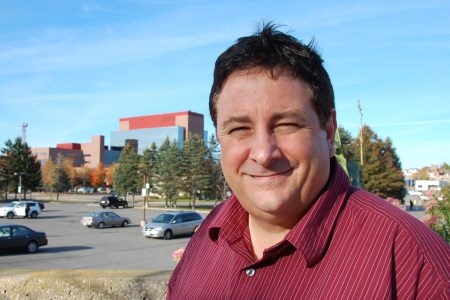Sault Ste. Marie is well-positioned to get a share of the chromite processing from the James Bay lowlands, said its outgoing economic development head.
“The value that Sault Ste. Marie will bring to the Ring of Fire is we’ll have one of North America’s biggest steel plants,” said Bruce Strapp, who was preparing in October to take on his new job as executive director of the Northern Ontario Heritage Fund Corporation (NOHFC).
While a number of communities across the North have been vocal in getting a piece of the action to process chromite ore, the Sault has been flying below the radar, but Strapp said the city is far from being out of the loop.
Strapp said with mine development in the massive McFauld’s Lake camp more than five years away, there is no reason to blow the Sault’s horn until the site selectors show up.
“Moving forward and talking to Cliffs (Natural Resources) and saying ‘We want your business’ (makes no sense when) there’s really no business to be had yet.”
Development in the Ring of Fire is very much at the preliminary stage with a rail feasibility study underway, a full-blown environmental assessment to come, along with extensive consultation needed with First Nations.
Strapp said by the time the companies start to build mines, “the Sault will be positioned to put steel and chromite together for an industry here.”
Cliffs officials have chided him for not being an outspoken community player, but the Cleveland-based global miner is well aware of Essar Steel Algoma and their future multi-billion-dollar investment plans for the city, said Strapp.
With service connections from two railroads (including a direct link north to Hearst), port facilities, large business-to-business support, and the existence of a major steel plate and sheet mill, Strapp said the Sault has many pieces in place that “no one else has.”
Strapp said Nakina in northwestern Ontario or Timmins would be likely places for a metallurgical site for McFauld’s Lake ore, but the Sault is ideal to handle processed chromium (ferrochrome) to make stainless steel which would compliment Essar’s operations.
“What we want is the value-added stainless steel.”
In the big logistics picture, Strapp said all of Northern Ontario’s largest metallurgical and industry players must be well connected to a “very robust and dynamic rail system that’s competitive.”
Transportation will likely be a priority item for Strapp as he moves his files across Foster Drive from the Civic Centre to the Roberta Bondar provincial building to head up NOHFC. He replaces Aime Dimatteo of Sudbury, who vacated the position in June to take the director general’s job at FedNor.
After 18 years at the Sault EDC, Strapp said the opportunity to be the region’s “top gun” of economic development was too good to pass up.
“Change is one of the things I live with daily so this is the ultimate change.”
Dave Murphy, executive director of Business Sault Ste. Marie, takes over as acting CEO until a successor is named.
Strapp will have an expanded economic development fund to work with next year as the agency’s budget increases by $10 million to $100 million, coinciding with the release of the province’s Northern Growth Plan. NOHFC must be a “driving force” behind that regional strategy for job creation, entrepreneurship and infrastructure programs, he said.
With 30 years in the public and private sectors, he began his career in Red Lake running an expediting business that serviced the area’s mining camp. He became the town’s economic development officer for five years before taking the same position in Timmins in 1990. Two years later, Strapp moved into the Sault’s economic development post.
Last February, Strapp received the Joseph Montgomery Economic Development Achievement Award – his profession’s highest – at the Economic Developers Council of Ontario in Toronto.
Strapp takes pride in his development of a network of volunteer and professional players for a successful diversification strategy, Destiny Sault Ste. Marie, that’s seen the city attract renewable energy projects, clean-tech companies, and improve and secure its transportation infrastructure.
Strapp said that kind of development preparedness enabled the Sault to grab a good chunk of federal and provincial infrastructure dollars, including $33 million for track bed improvements to save the Huron Central Railway from extinction.
That adds momentum to build up the city’s multi-modal transportation capacity as the EDC’s attention turns to opening up access at Essar Steel Algoma’s deep water dock to freight from outside companies.
Strapp said Essar is very receptive to supporting other private sector ventures but characterizes discussions between the city and the steelmaker as still in the “grassroots” stage.
At NOHFC, he’ll be working closely with FedNor and Industry Canada to funnel more leverage money to Northern job creation, community development and capacity-building with First Nations.
“The most important thing is we’re not going to duplicate what we do, but be able to maximize what we can do constructively for Northern Ontario for the long run.”
Strapp said he enters the job with some “biases” on how to get more value out of NOHFC programs. In his job interview, he provided his top priorities for the agency over the next six months that he’ll reveal after meeting with his new bosses and staff. He plans to get out on the road to meet with economic development and community leaders in the coming weeks.




